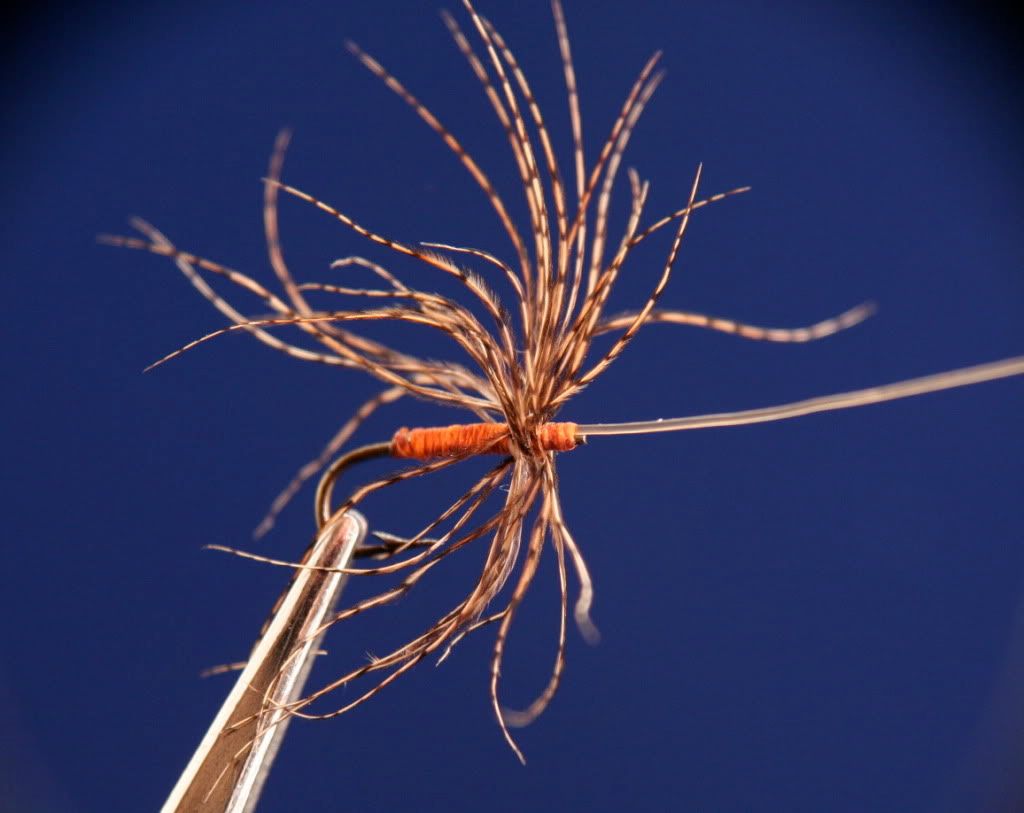For example. If you read some of them you will notice that they mention "a head of {coloured thread}. Viz from Sylvester Listers list:
Red Spinner - Feather from under starling wing, very light. Head, Orange silk ribbed with gold wire. Hook 14.
From this I gather he meant that the head was pronounced. Similar to this old fly I posted some time ago:

What I have been doing, and I suspect most of us, is trying the keep the head 'tie-off' as small as possible. In my case no more than three wraps. Yet it would suggest the head is an important part of the overall fly design.
Any one have had the same thoughts?
